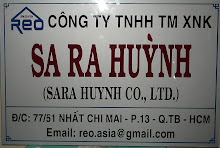Another Favorite Method I have used many times in the Bay Area of San Francisco.
If it works there it should work anywhere or at least most anywhere.
The key to using the seller as lender in a real estate transaction is trust.
The seller has to trust us to pay him his equity according to the terms of the agreement we work out with him.
The conventional way to "Buy" trust is to give the seller a large cash down payment that way he knows that we will not likely walk away from the real estate property.
We are going to stay around and take care of our obligations.
The seller will be able to take back the real estate property, and we will lose not only that big cash down payment but also any appreciated value above the seller's equity.
But how do we develop trust when there is little or no cash put down on the real estate property?
How does the real estate investor make the seller feel secure in such cases?
Often the real estate investor can develop personal trust with the seller simply on the basis of personal qualities and win-win attitudes.
In such cases, the equity of the subject real estate property itself is sufficient to close the deal.
In some instances, a little extra is needed to remove any suspicions on the part of the seller.
That is where the blanket mortgage comes into play.
In any Mortgage or Trust eed arrangement, there are two basic documents that are prepared.
One is a note given by the real estate investor to the seller setting forth the terms for converting the equity to cash, the other is a security agreement in which the real estate investor says to the seller . . .
"If I don't perform according to the terms of the note, then you can take back the real estate property."
In a cashless or a near cashless transaction, the security of the subject real estate property may not be enough to satisfy the seller.
The real estate investor may choose to secure the note with additional collateral - not only the subject real estate property but also additional real estate property (equity) he may have in his real estate portfolio.
The note itself stays the same, but the security agreement is changed to increase the collateral and build trust with the seller.
Naturally, the real estate investor will want to arrange to have the seller release the additional collateral as soon as the subject real estate property appreciates to a predetermined value or as soon as the real estate investor has proven himself to be dependable and prompt in making his payments.
The blanket mortgage technique is not among the most frequently used in creative finance.
The real estate investor hopes to build trust without having to tie up his other equities.
Still when a seller needs that extra bit of persuasion, the blanket mortgage technique can come in handy.
For example, one creative investor we know of recently acquired a nice four-bedroom, two and half-bath home for $85,000.
The investor put a new first on the real estate property (which was nearly free and clear) and had the sellers move their remaining equity ($45,000) to another real estate property owned by the investor.
To build trust will the sellers, the real estate investor granted them a blanket mortgage that also included his equity in another rental real estate property he owned.
Although the real estate investor did not put any of his own money into the deal (the bank provided all that was needed), he was able to persuade the sellers to agree on the basis of his neck being on the line with the blanket mortgage.
Remember there is not really any True Nothing Down but this is as close as you can get as we know there are always some expense involving Escrow, Closing and so on but that will be covered at a later time.
Subscribe to:
Post Comments (Atom)





No comments:
Post a Comment